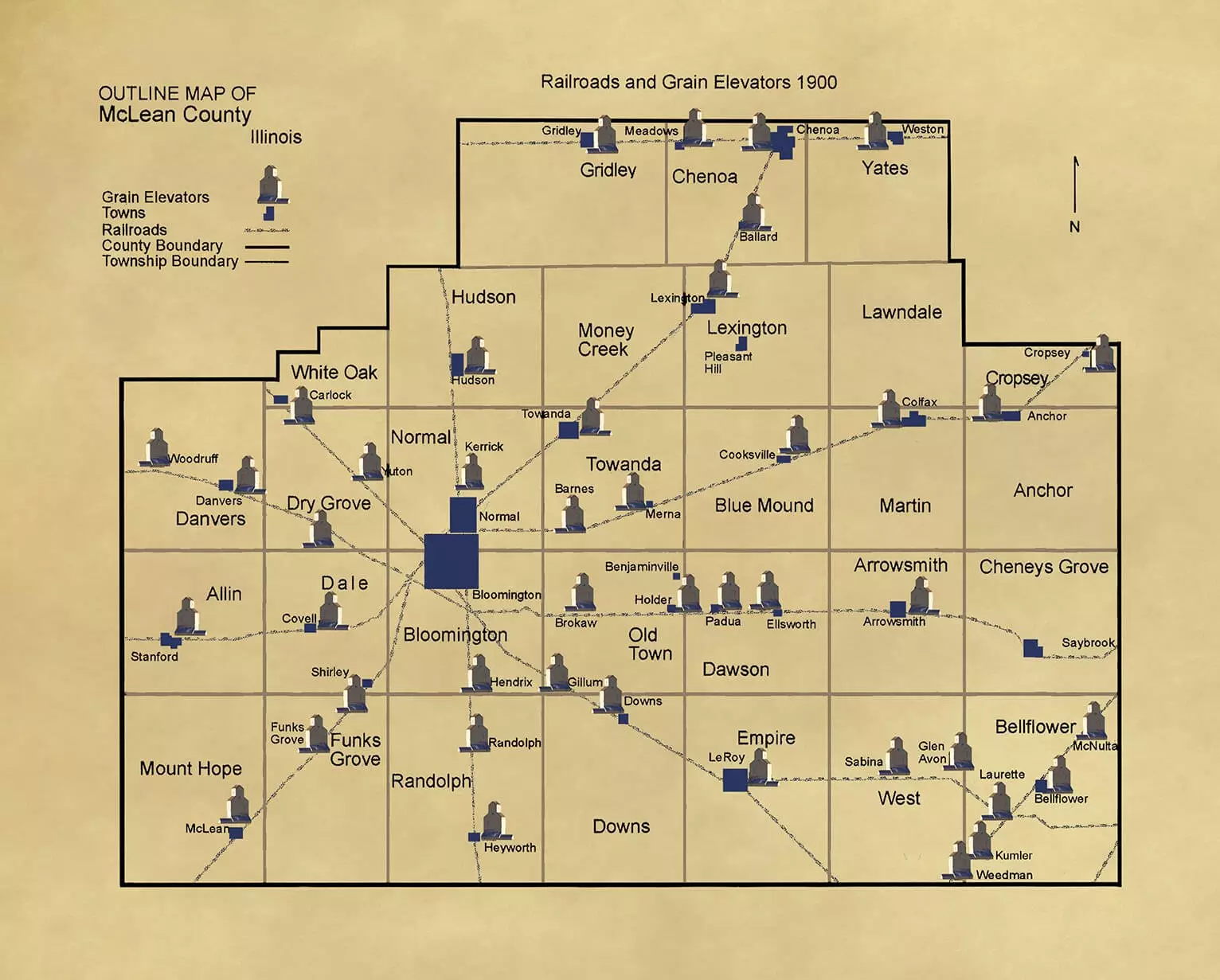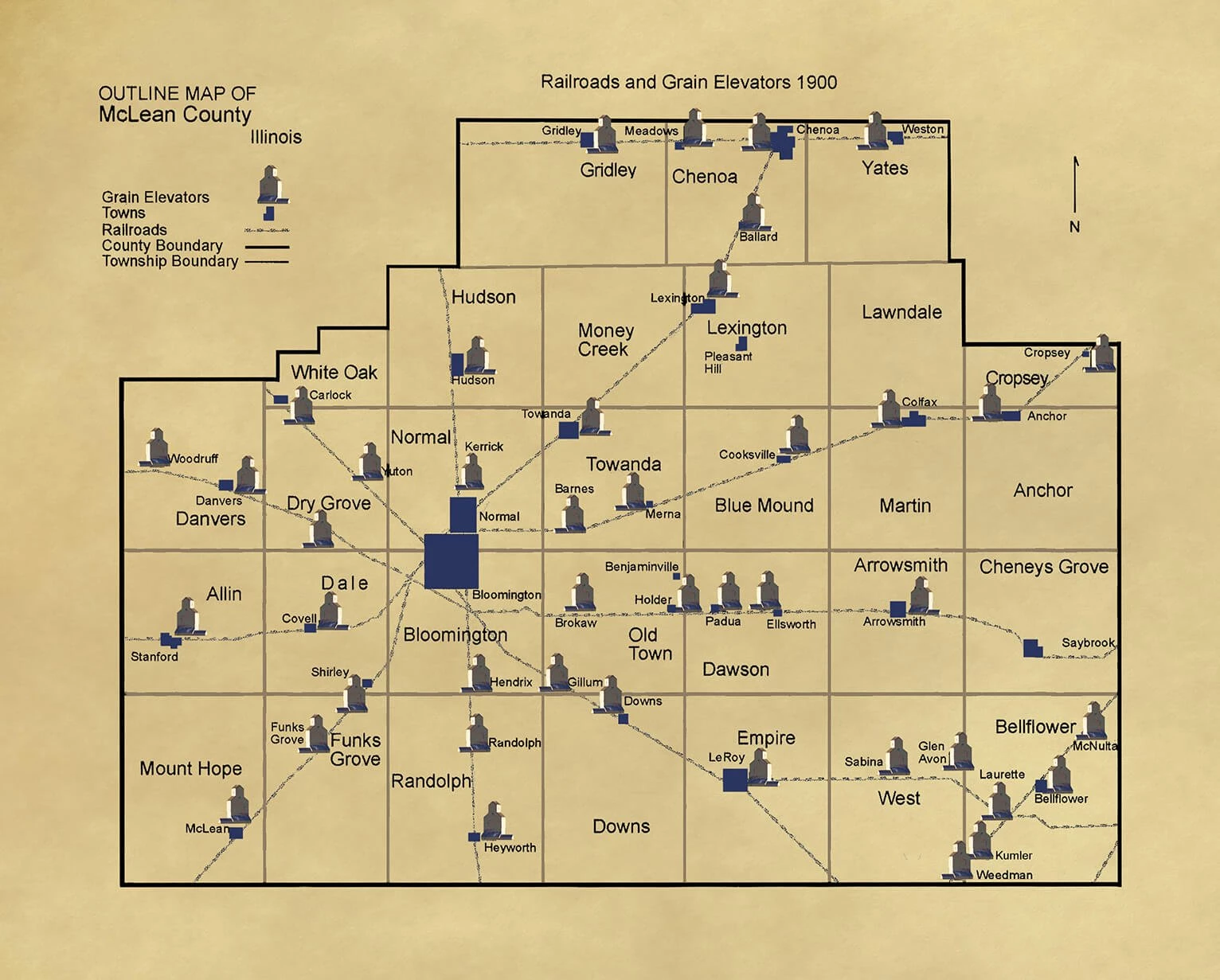Getting Crops and Livestock to Market – Grain Elevators
From the farmer’s wagon, truck, or cart, the grain was dumped into the grain pit. From there it was “elevated” (thus the name elevator) into grain bins where it was stored. Once sold it was loaded into rail cars or trucks then delivered to remote markets.
C.A. Phelps and Co. built what may have been McLean County’s first elevator at the Western Depot in Bloomington in 1865. Two years later W.H. Boies built the Gridley elevator.
As station agent for the Toledo, Peoria, & Western Railroad, which ran through Gridley, Boies saw a great opportunity.
Boies began dealing in grain and agricultural implements. Business was brisk, so in 1867 he built Gridley’s first elevator with a capacity of 25,000 bushels of grain. In 1869 Richard Breese joined him, and they added the shipment of livestock to their business.
“The tendency of modern railroad management is to build receiving centers for freight rather than allow business to be directed to points out of their reach, and we predict that before ten years pass away each city in Central Illinois which has good railroad connections will handle all the corn in its immediate vicinity.”
— Bloomington Pantagraph,
October 22, 1879
 Making a Home
Making a Home
 A Community in Conflict
A Community in Conflict
 Working for a Living
Working for a Living
 Farming in the Great Corn Belt
Farming in the Great Corn Belt
 Abraham Lincoln in McLean County
Abraham Lincoln in McLean County





